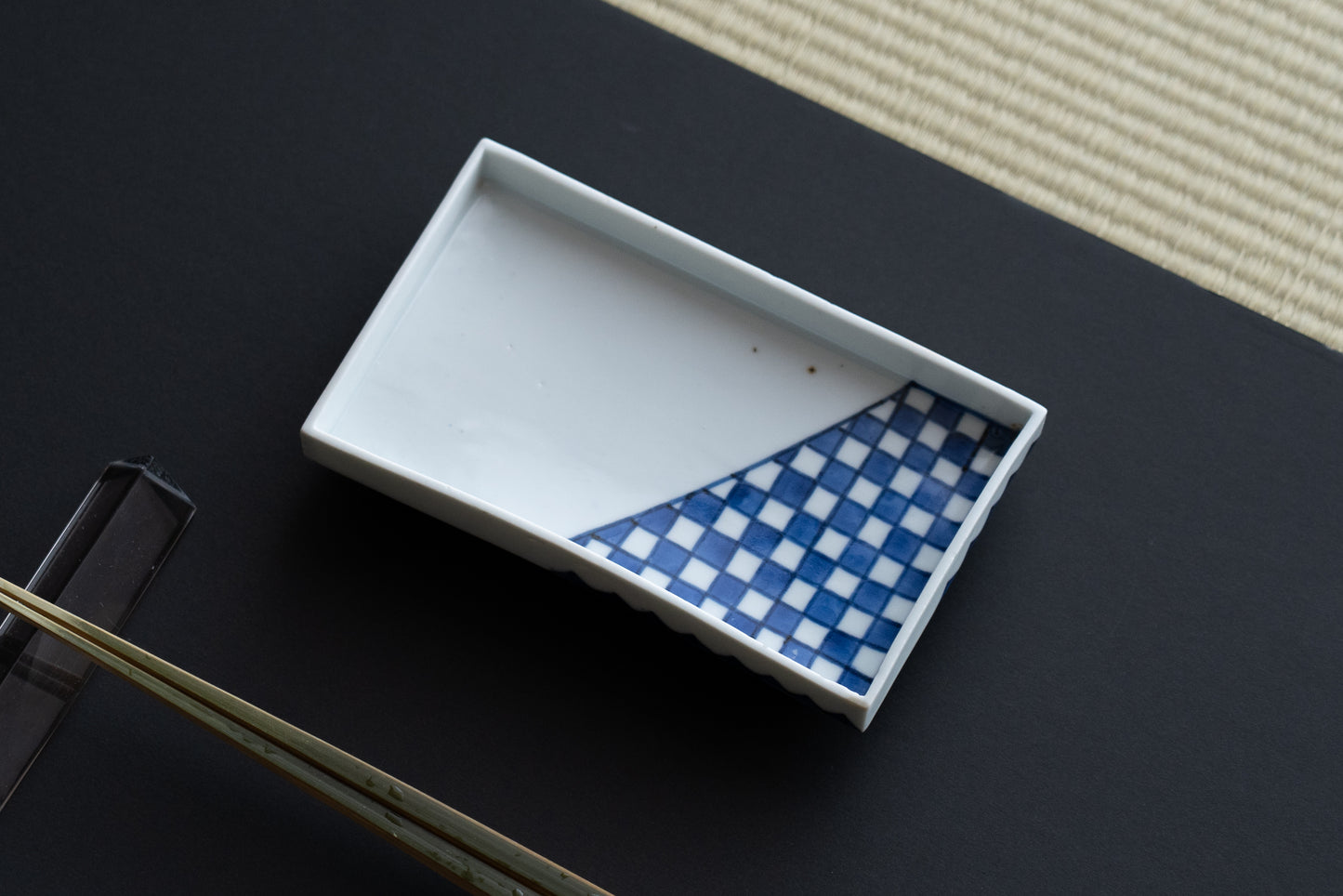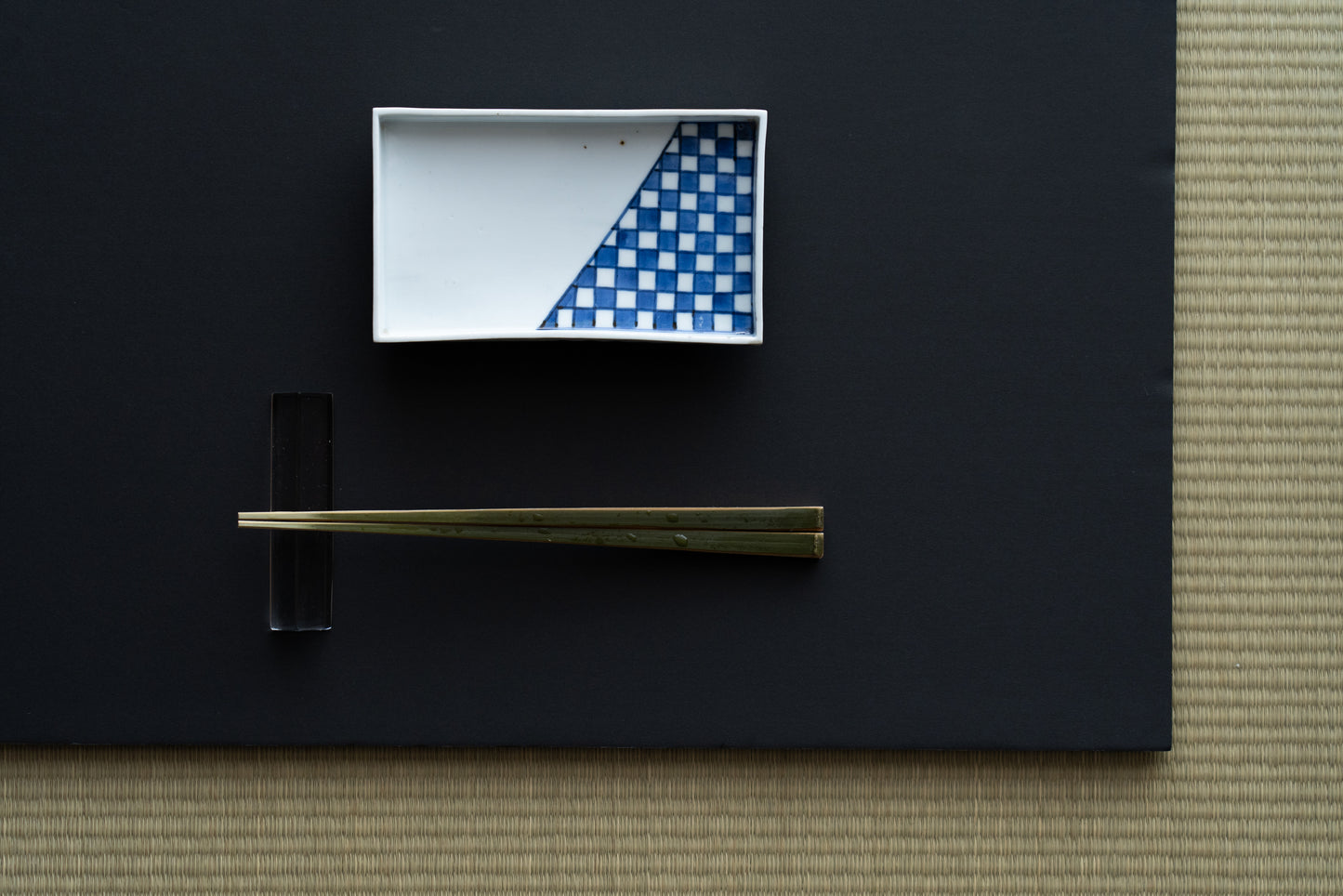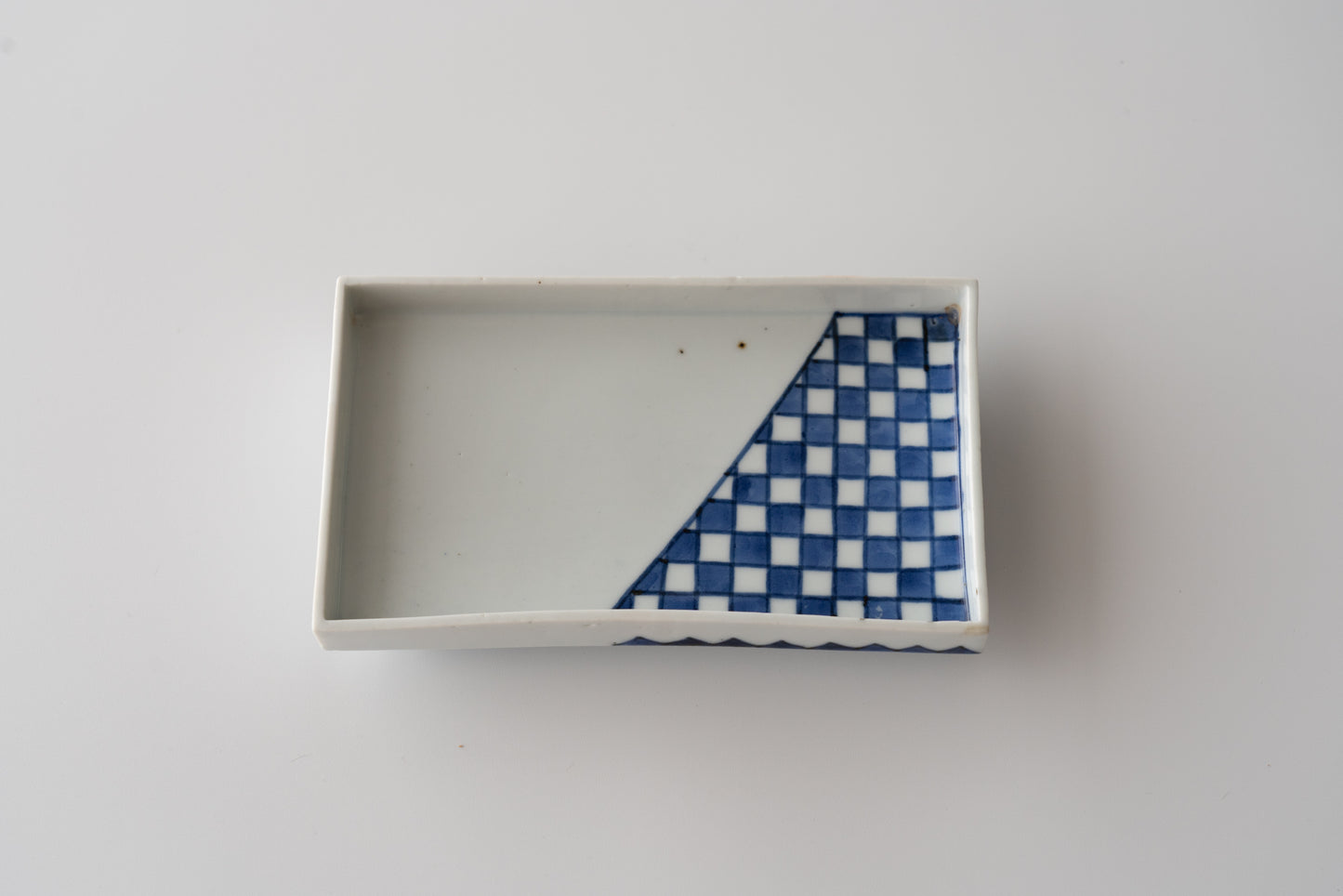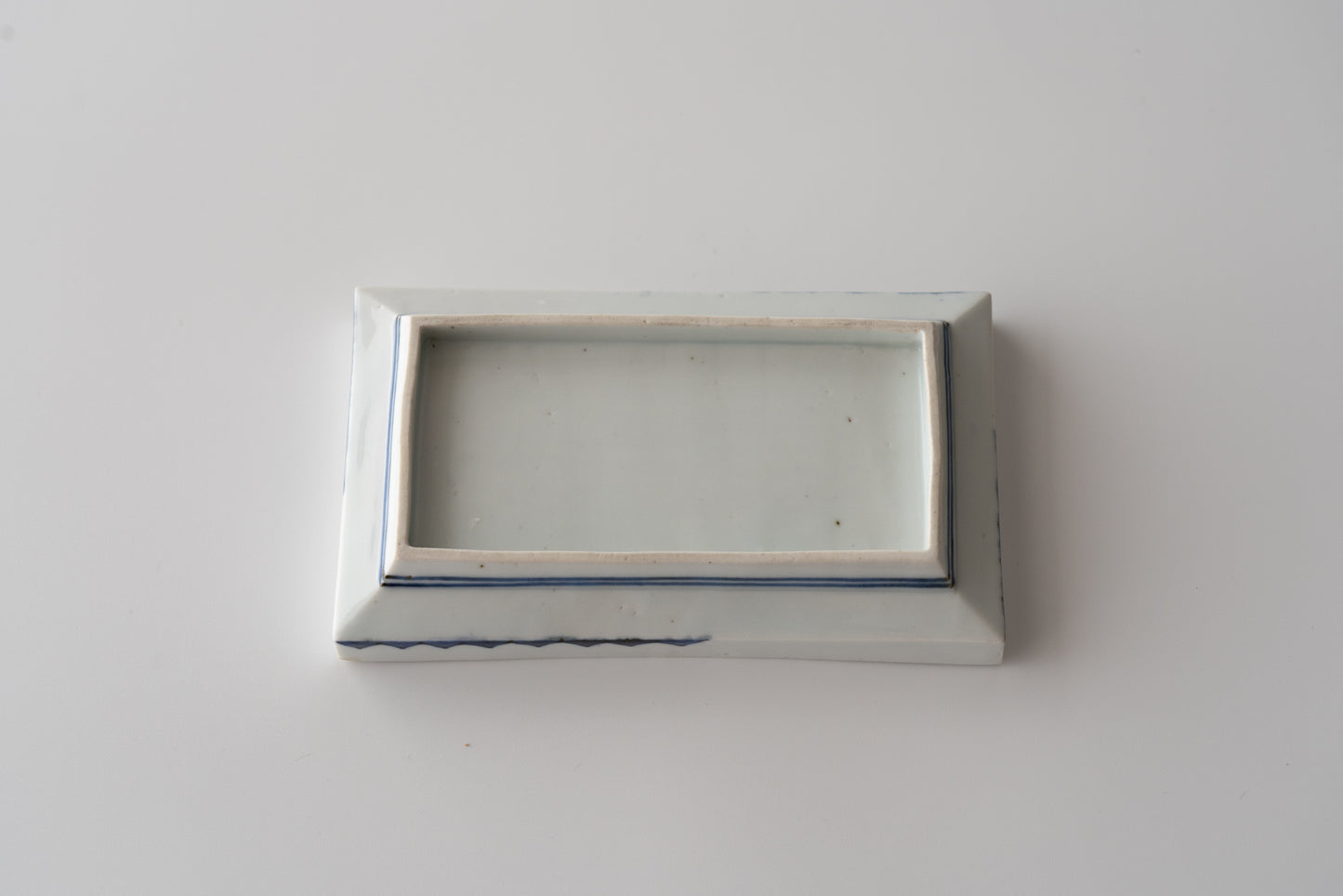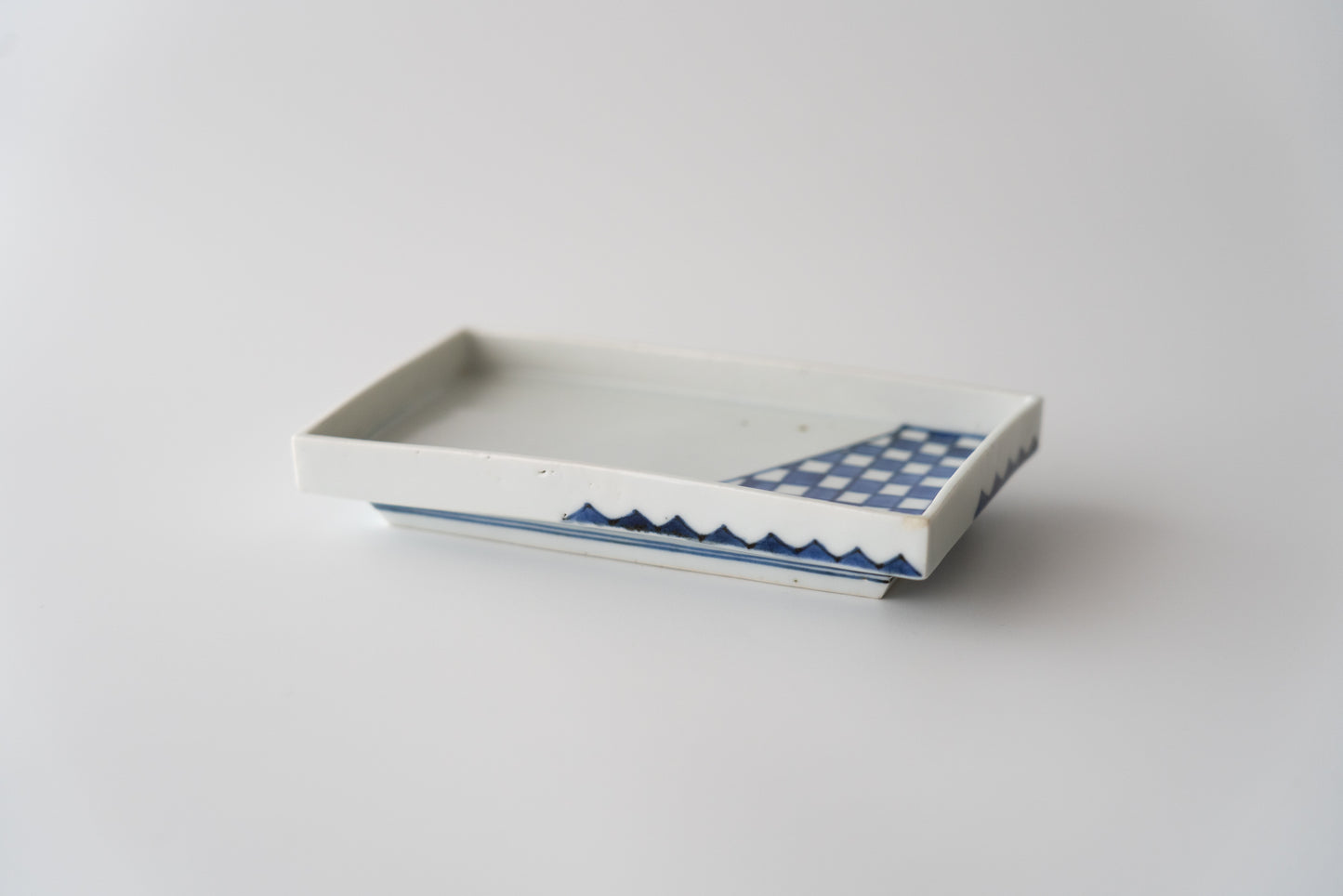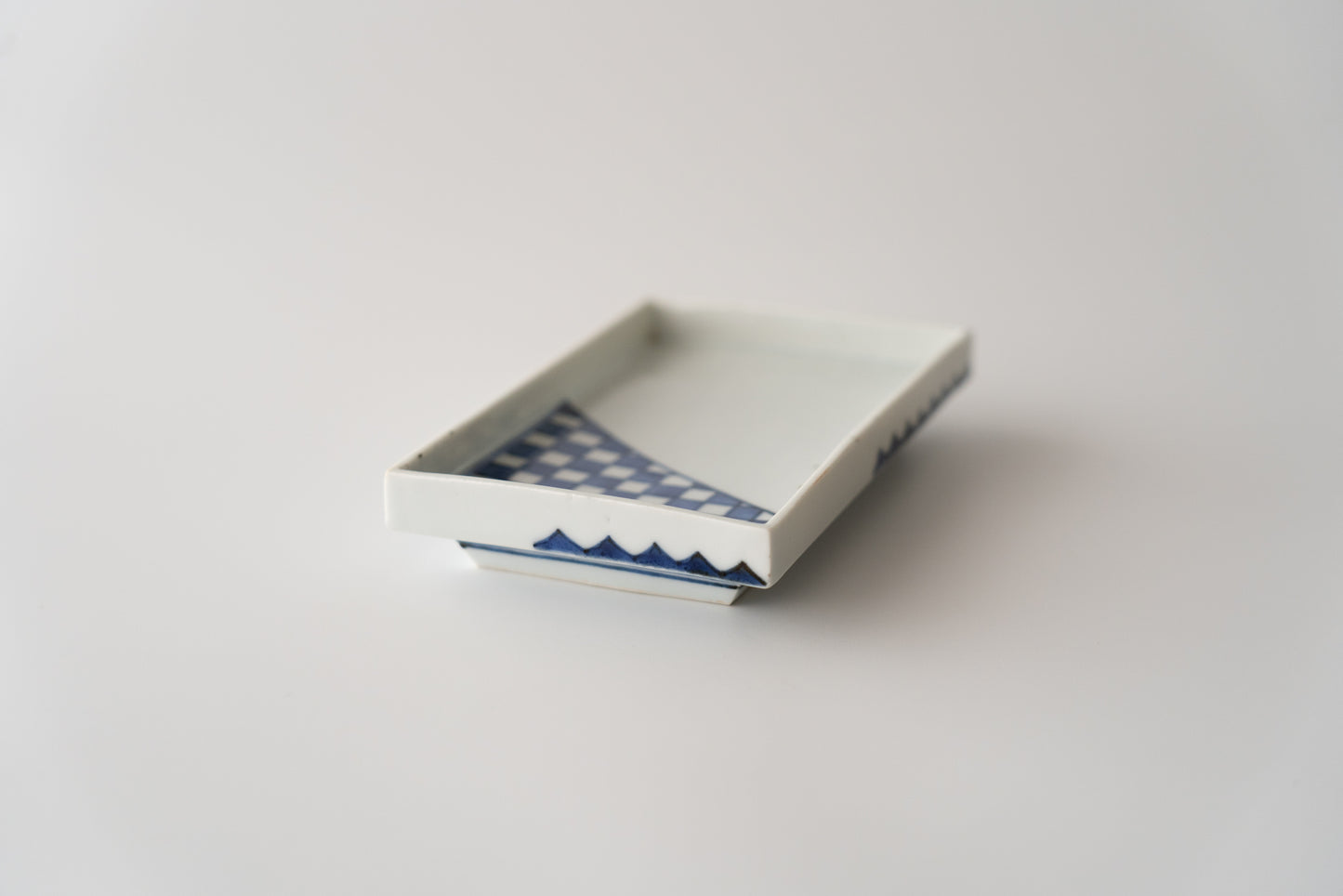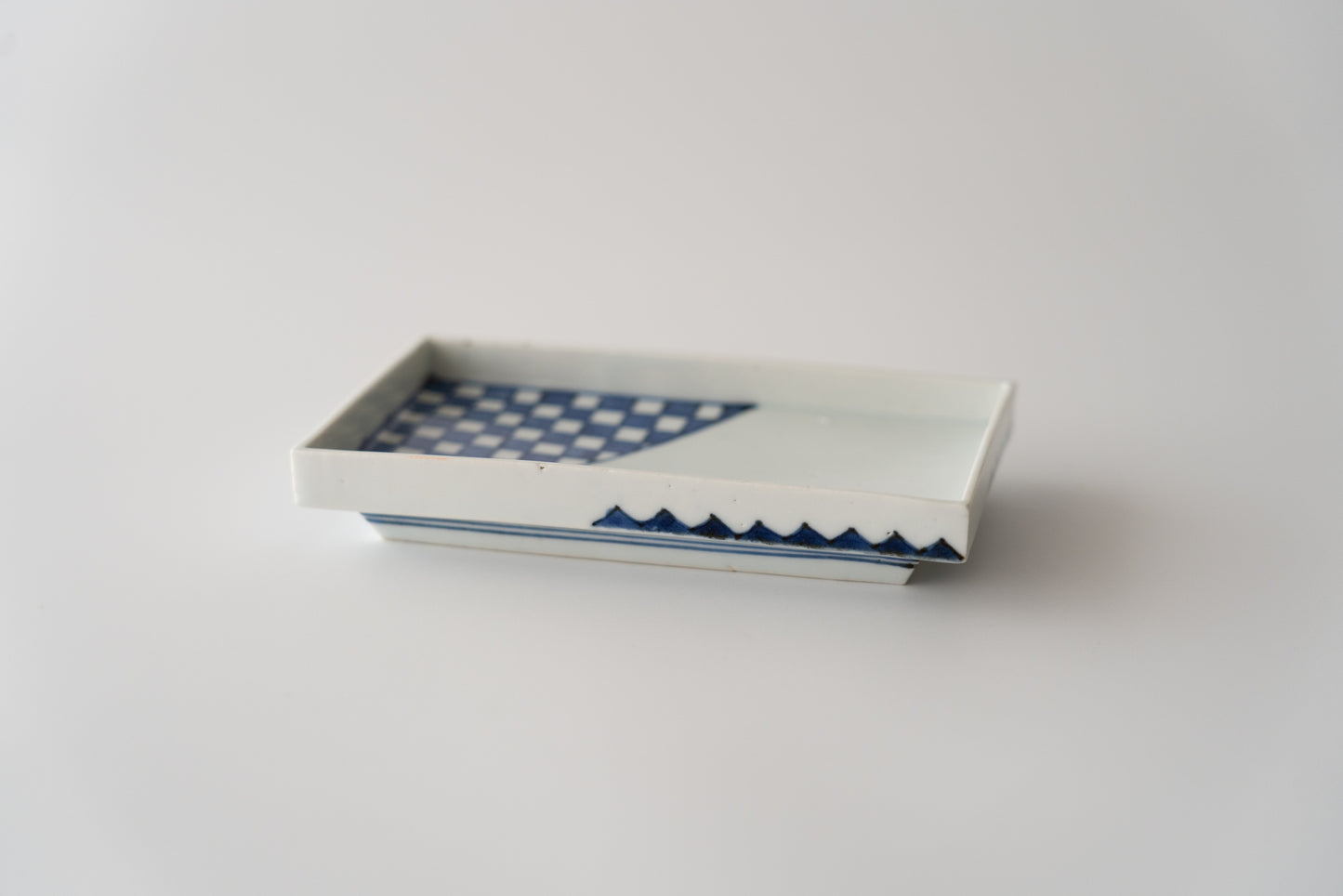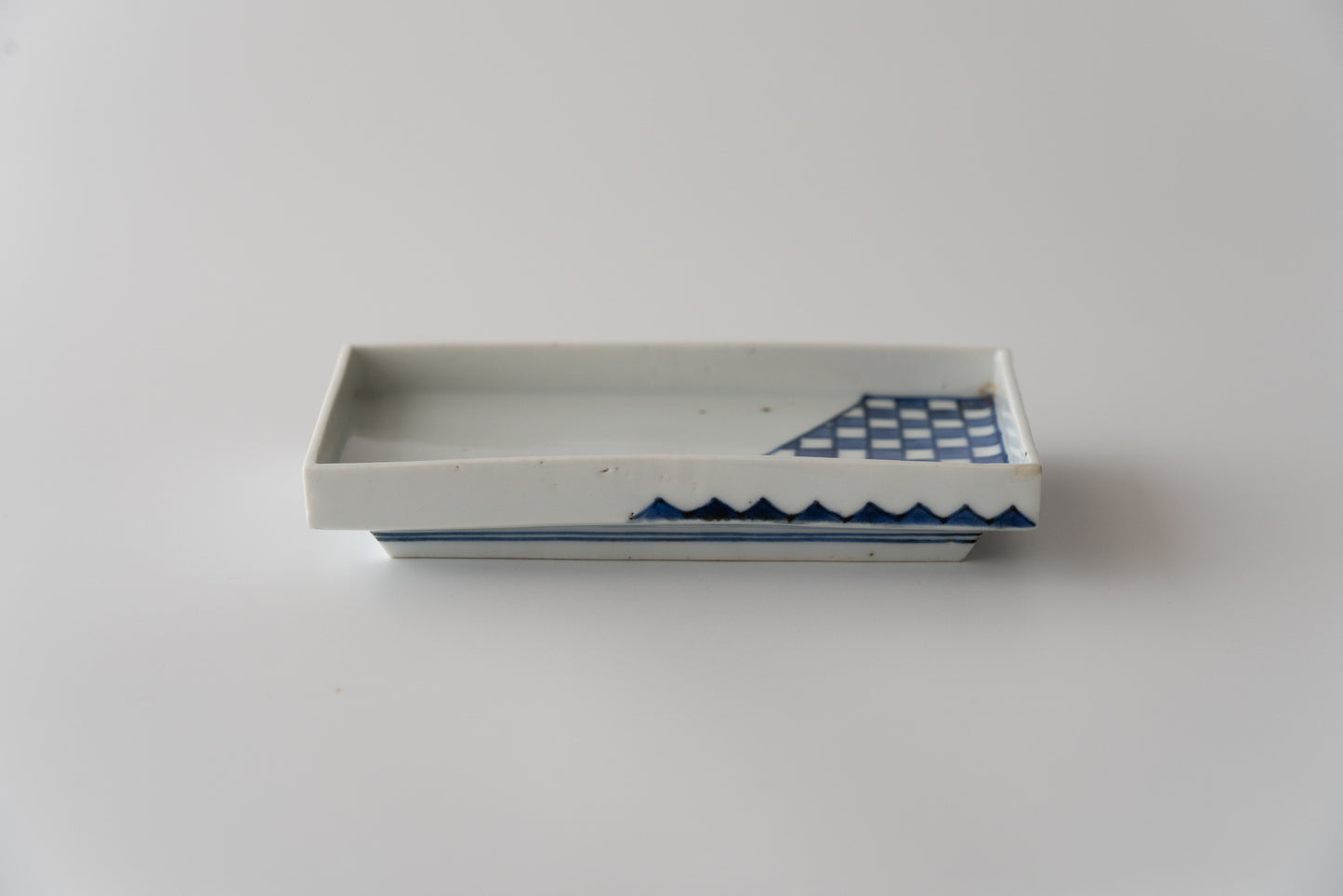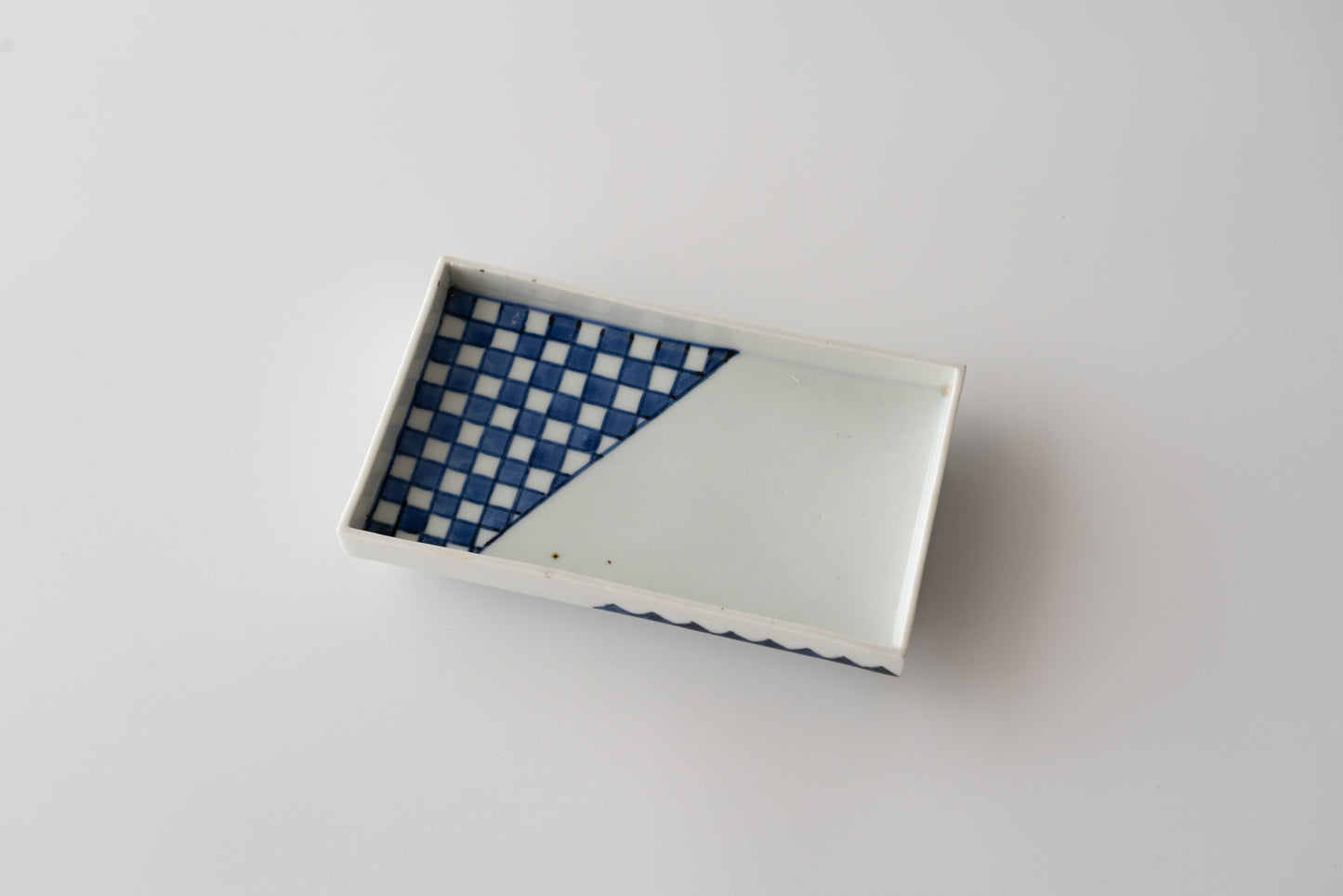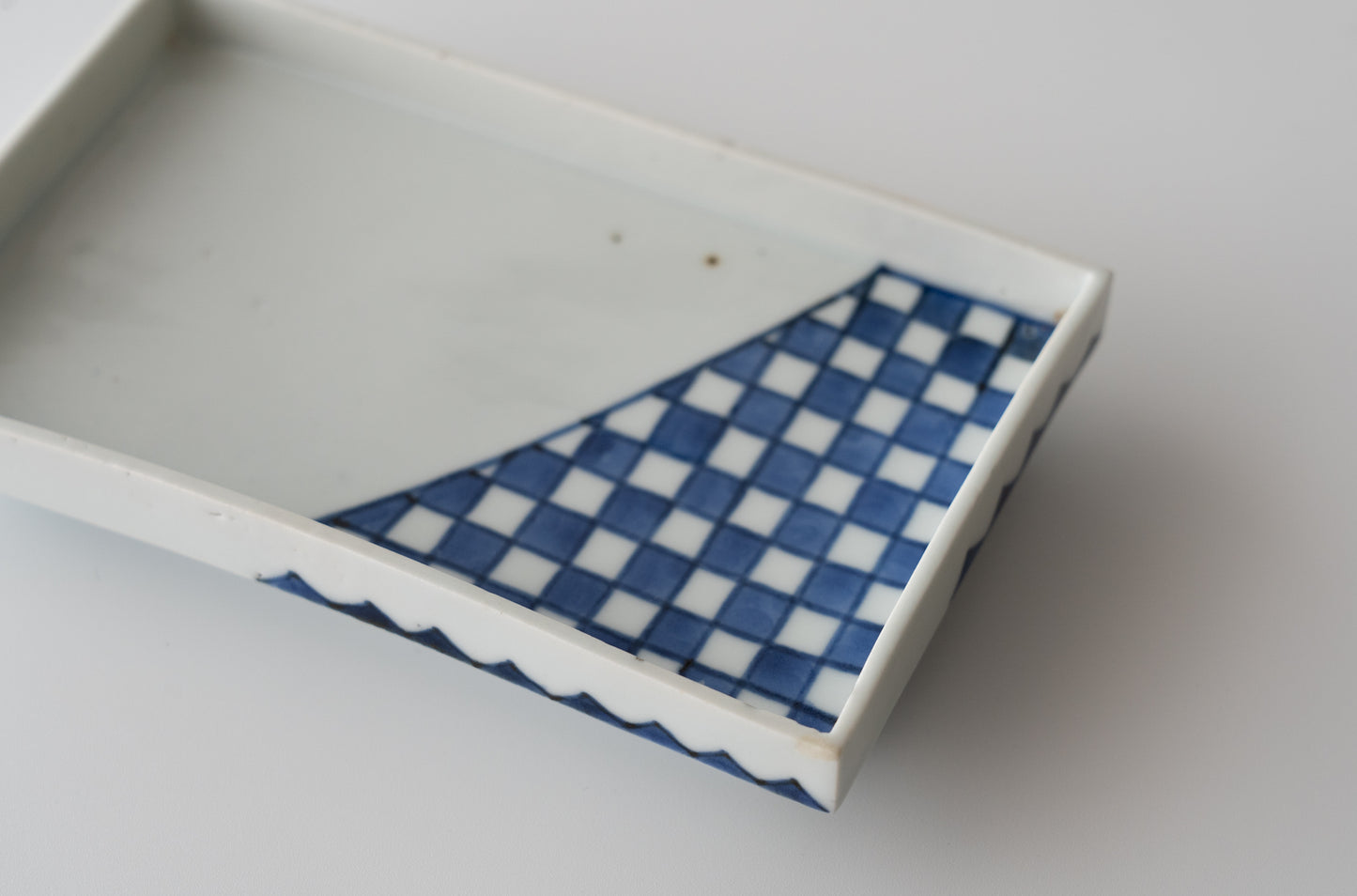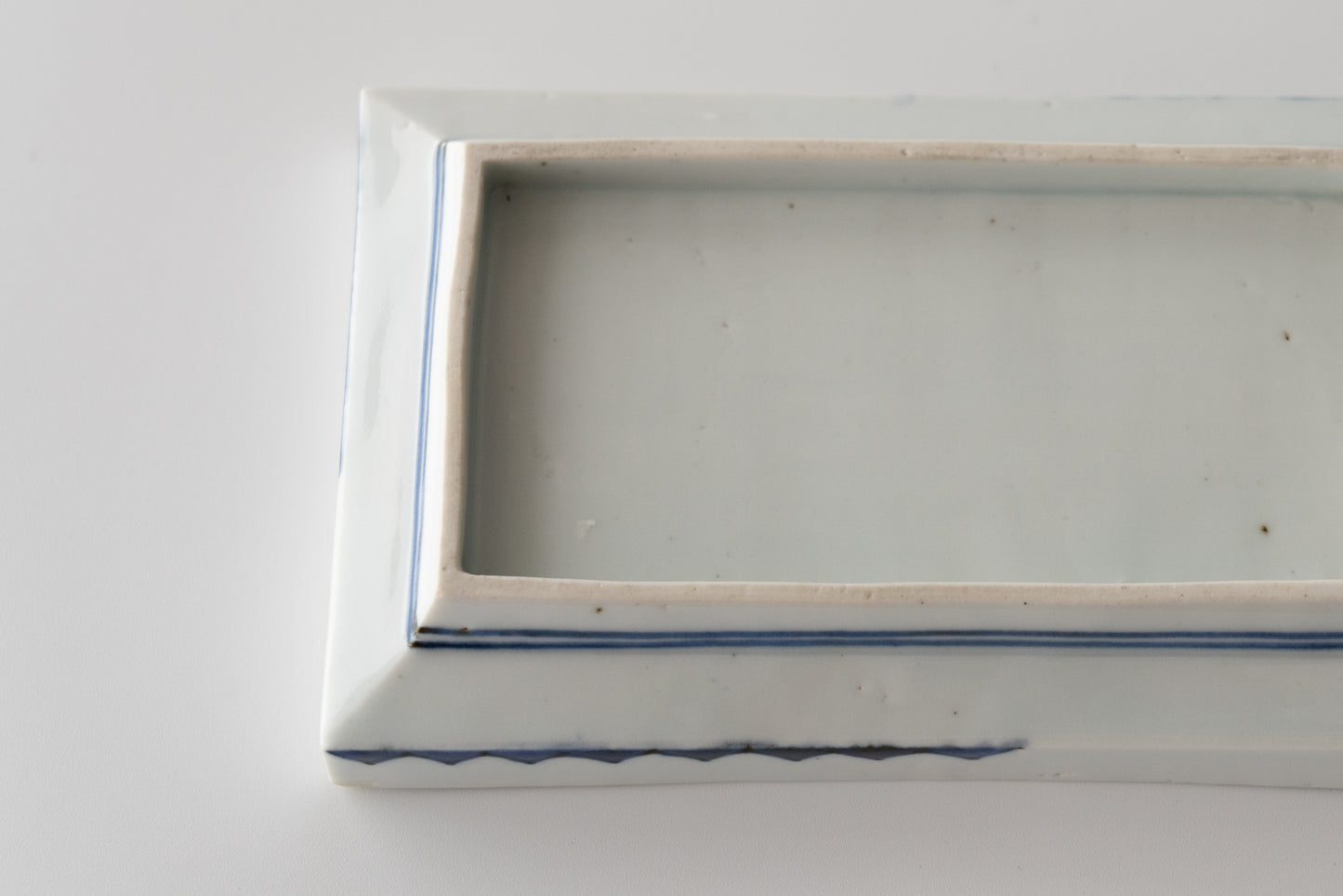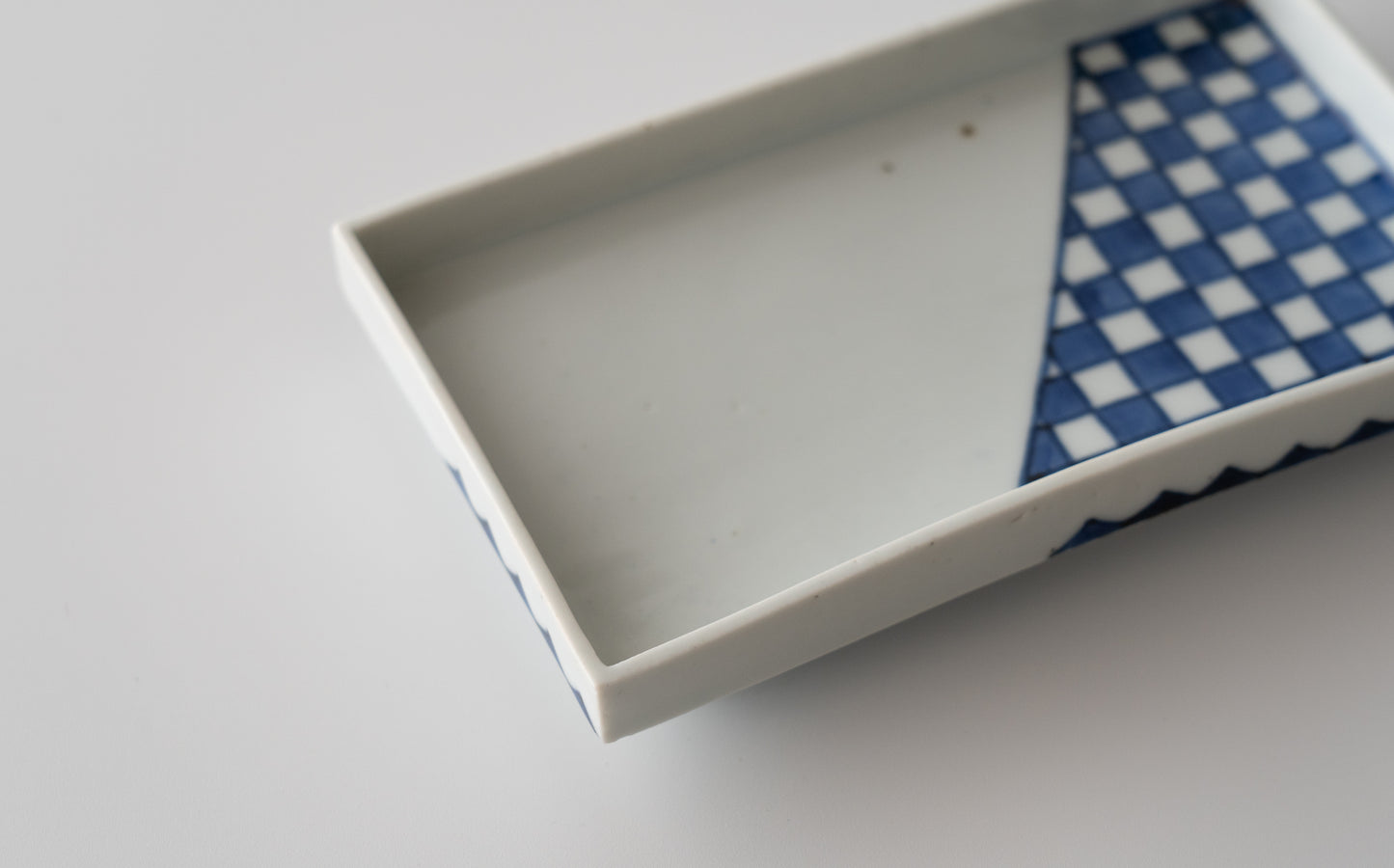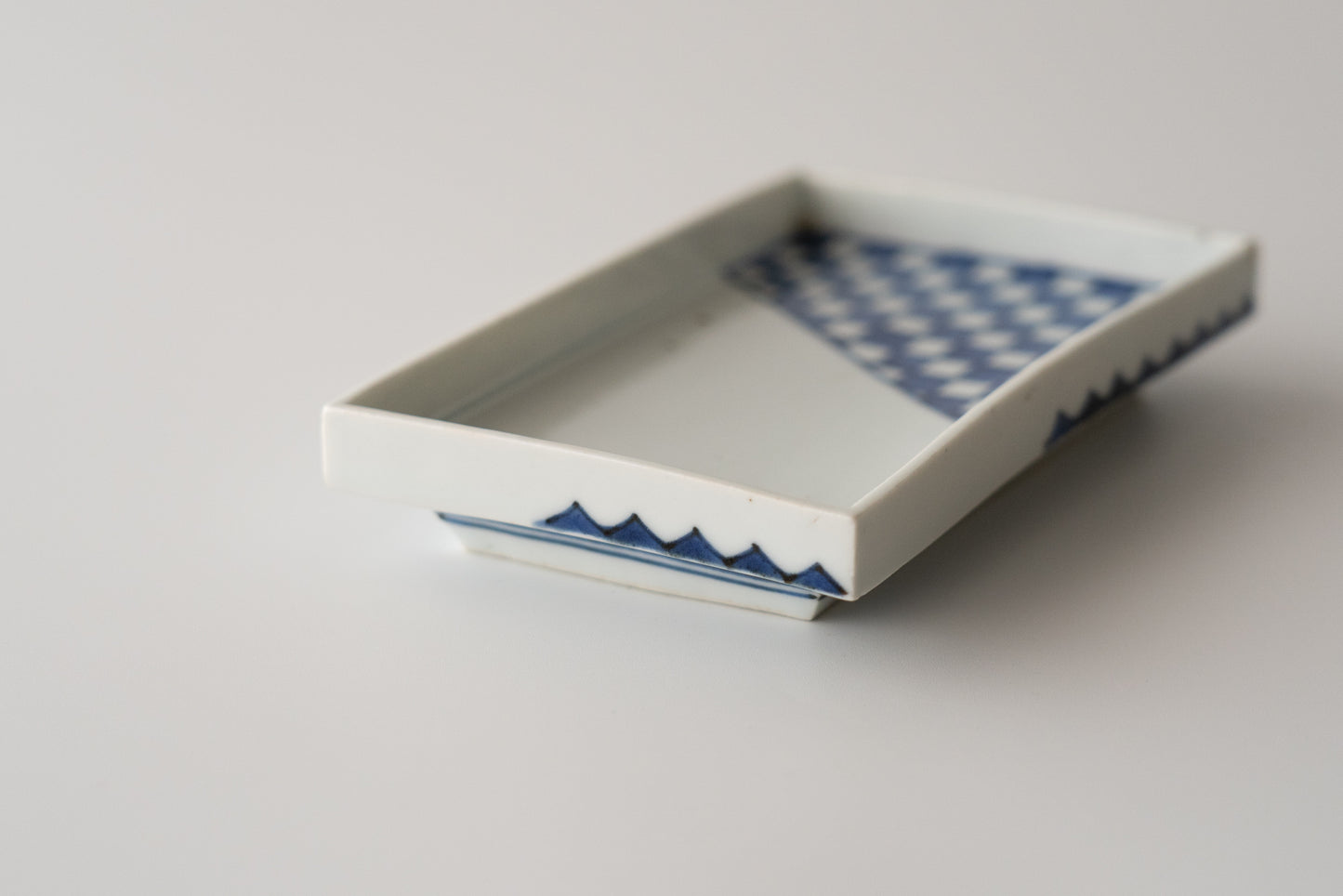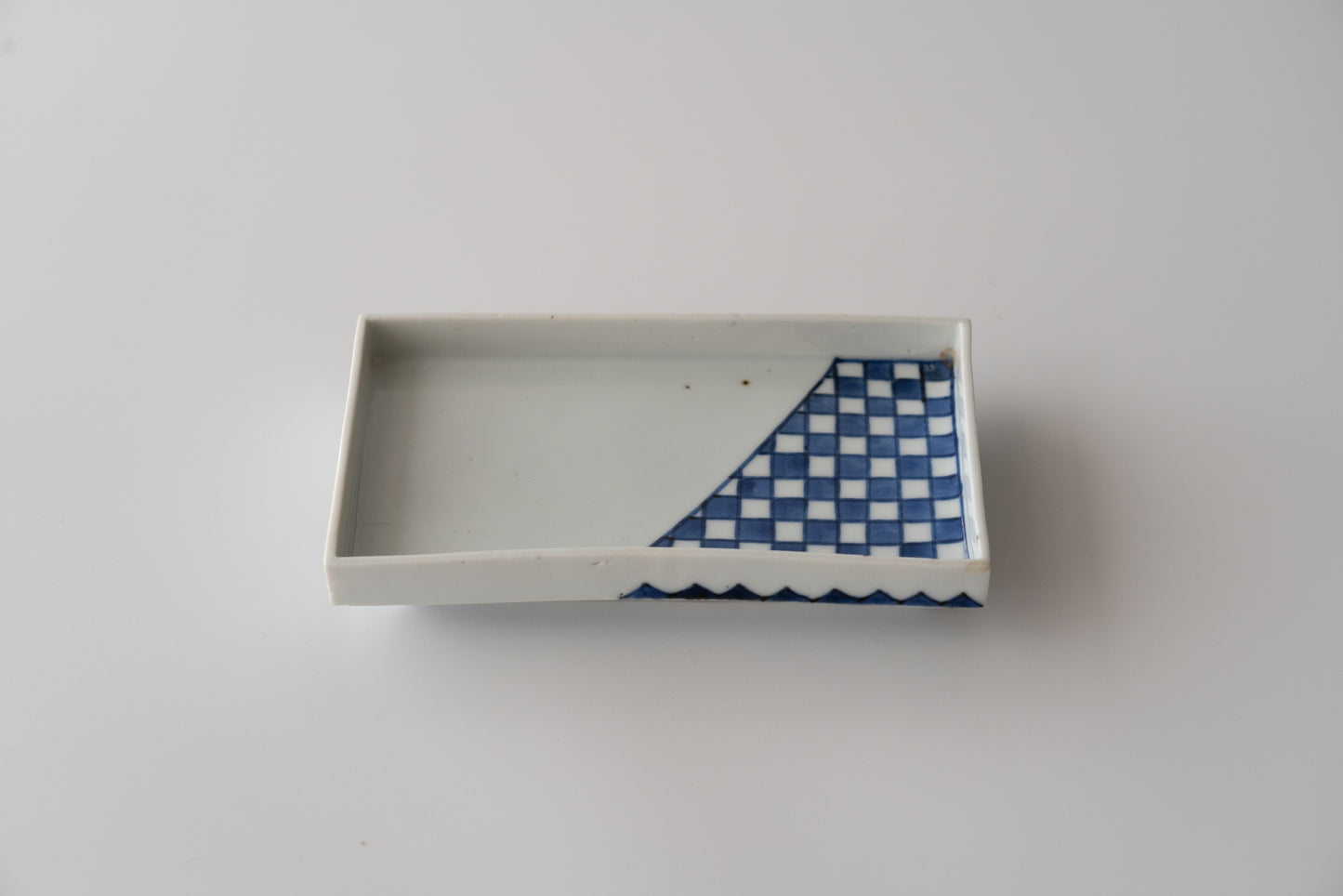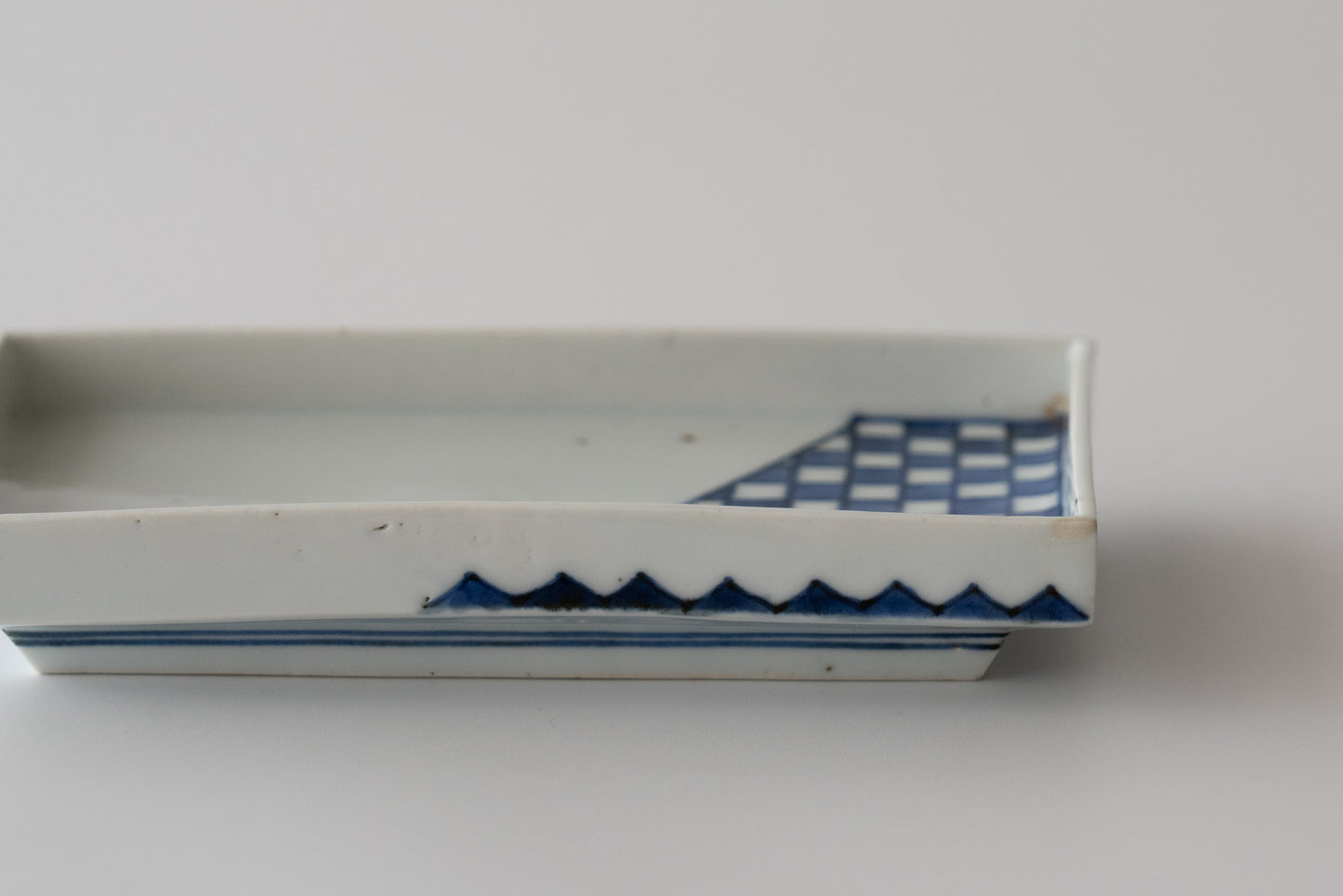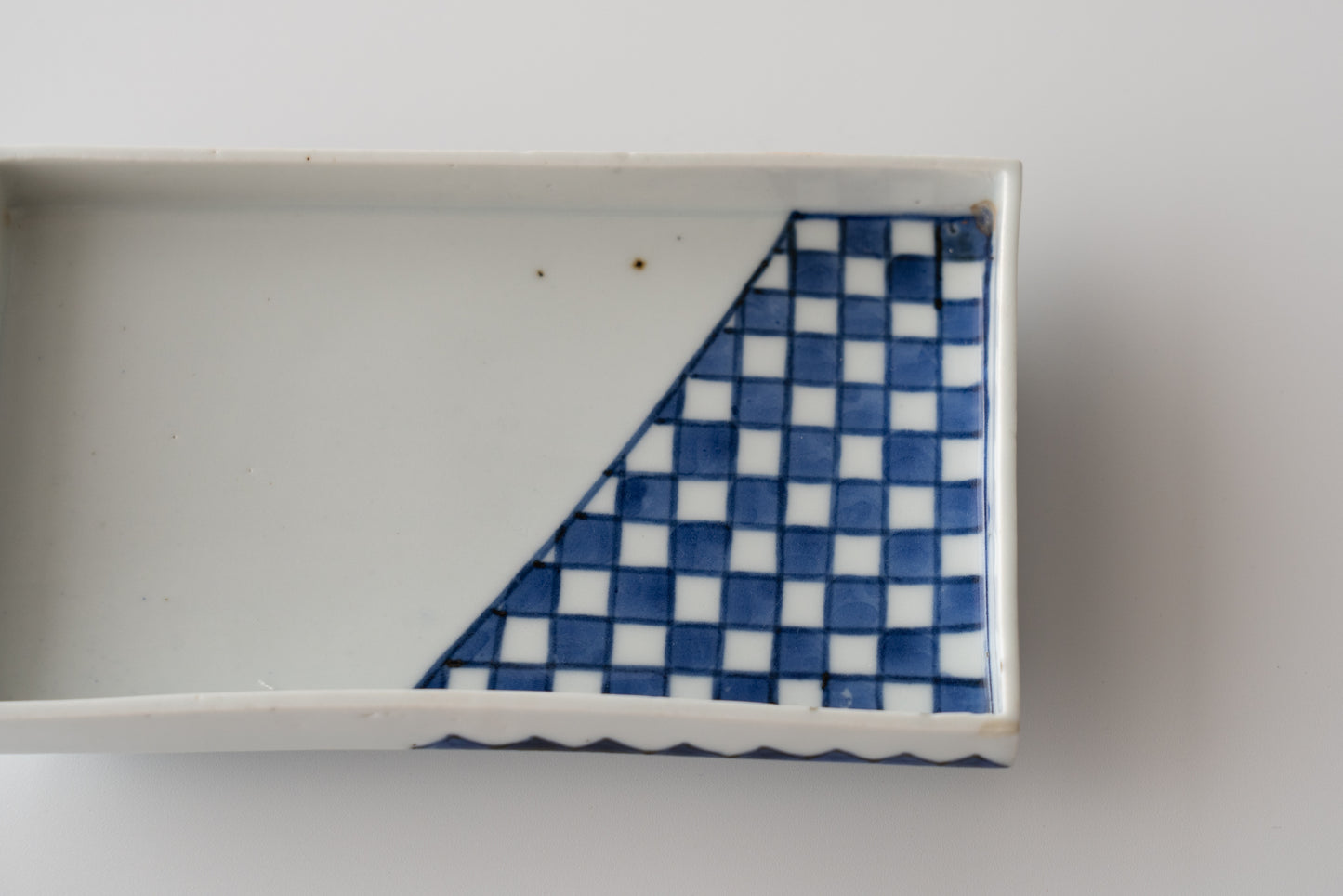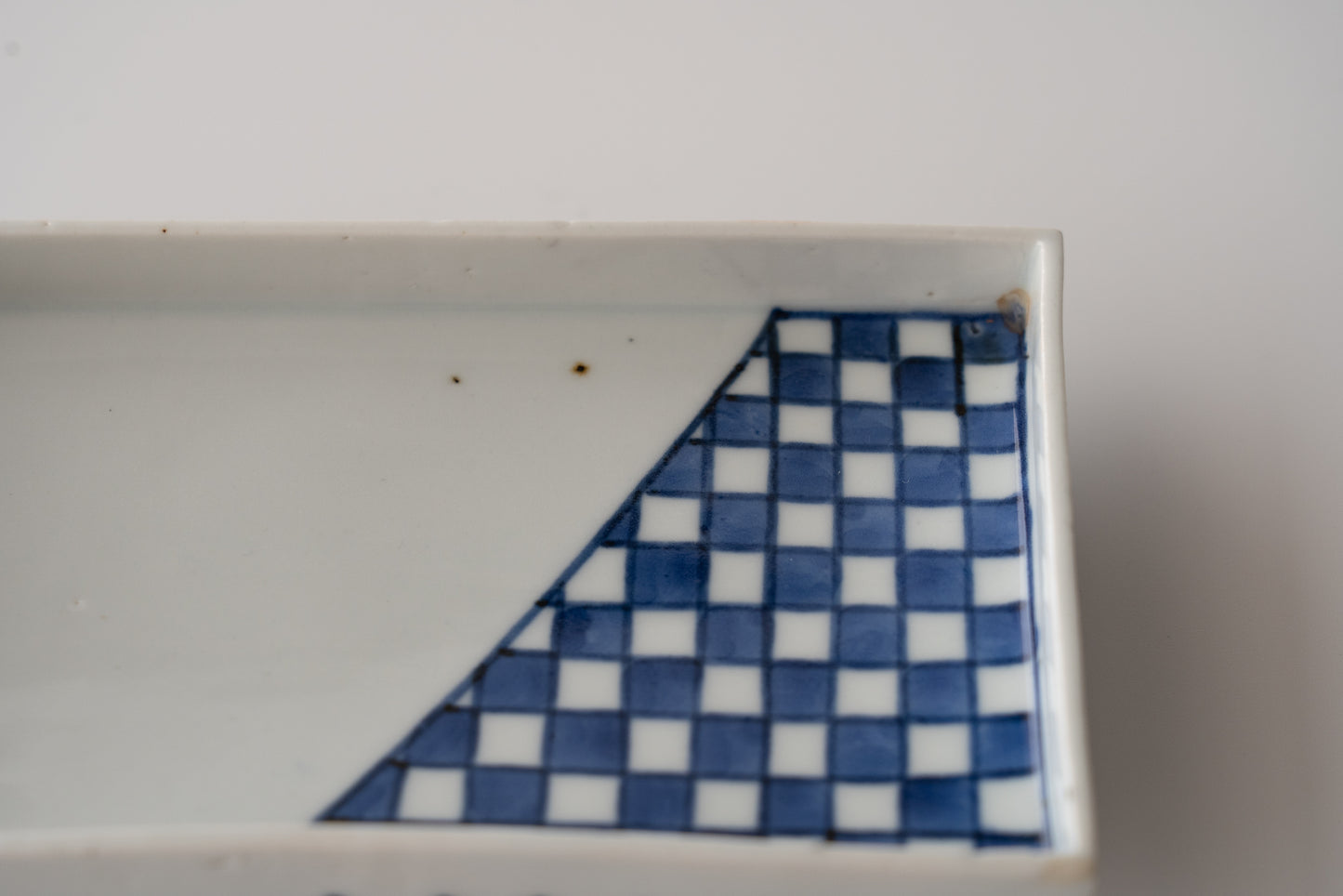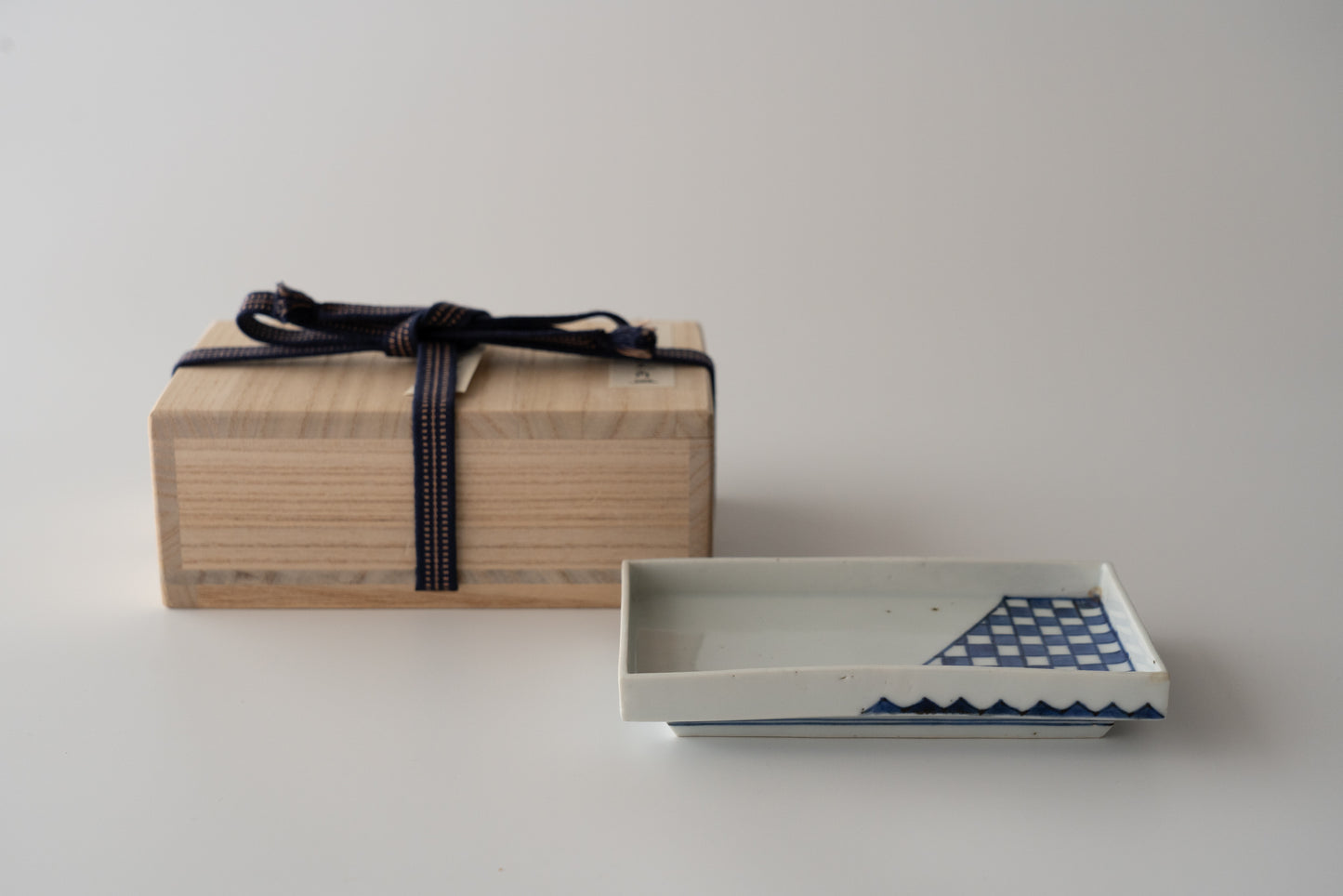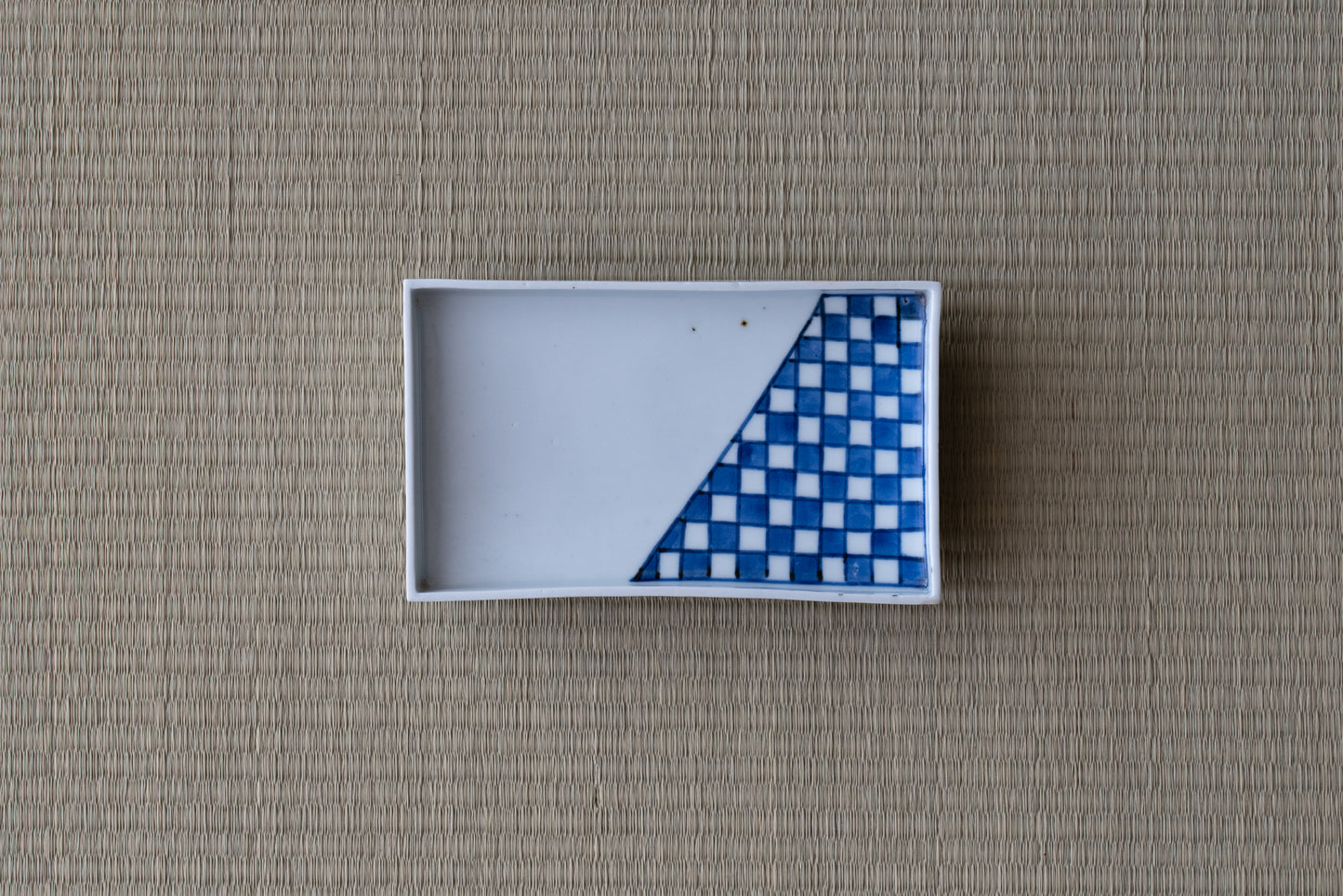Ai-Kutani checkered pattern square dish
¥254,545
- Region/Era Japan / Early Edo period, late 17th century
- Size H2.6×W14.8×D8.8cm
- Condition Good
- Accessory paulownia box
- No. 2-7
The simple design divides the square screen with white porcelain and a checkered pattern. It has been described as "modern" because it does not feel old, but there is no other piece that so succinctly represents the "iki" (coolness) unique to Japan in the Edo period.

Porcelain is the latest product that began to be produced domestically during the Edo period, and was considered a luxury item above pottery. Unless the product was refined, it would not be possible to satisfy the discerning wealthy people of the city. The ingenuity and ingenuity required to meet this demand is probably why the finest products were created that never go out of style in terms of both design and quality.

The checkered pattern, outlined in dark blue and white, stands out clearly against the clear white porcelain. Although it may seem simple, the checkered pattern can change its impression drastically with just a little change. The unevenness of the blue and white paint that is painted inside the tightly drawn outline, and the subtle sheen of the base material, give it a cool look without being drab.
The plate has a checkered pattern on the inside and a triangular pattern on the side. When you look at the plate from a natural eye angle, it is not hard to imagine how flat and uninteresting it would be without the triangular pattern.
In terms of shape, with square plates there will inevitably be distortion, but with this piece the distortion is kept to a minimum and the edges of the corners and rims are prominent.

Are you familiar with "The Foodie's Utsuwa," a book published by actor Shigeru Kamiyama, who was known as a connoisseur, during his lifetime?
This book is a relatively new collection of antique essays published in the 2000s, in which Kamiyama, who has had connections with people such as Aoyama Jiro, Kobayashi Hideo, and Shirasu Masako, introduces the items he used on a daily basis with photographs and text. Although the items featured are wide-ranging, including blue and white porcelain, clayware, and new crafts, the underlying elegance and dignity of the items reveal his discerning eye, making this a bible for modern antique lovers.
One of them is a specimen of the same species as this one but with a different shape.

("Gourmet Tableware", Yukawa Publishing, 2006)
Among the many designs of Indigo Kutani, there are only a few that give a fresh impression that transcends time. It must have been popular back then, but it's hard to find many of them on the market today.
It matches well with both tasteful wooden trays and modern, simple lacquer trays.

To pick up and see the actual item in the gallery.
Reservation